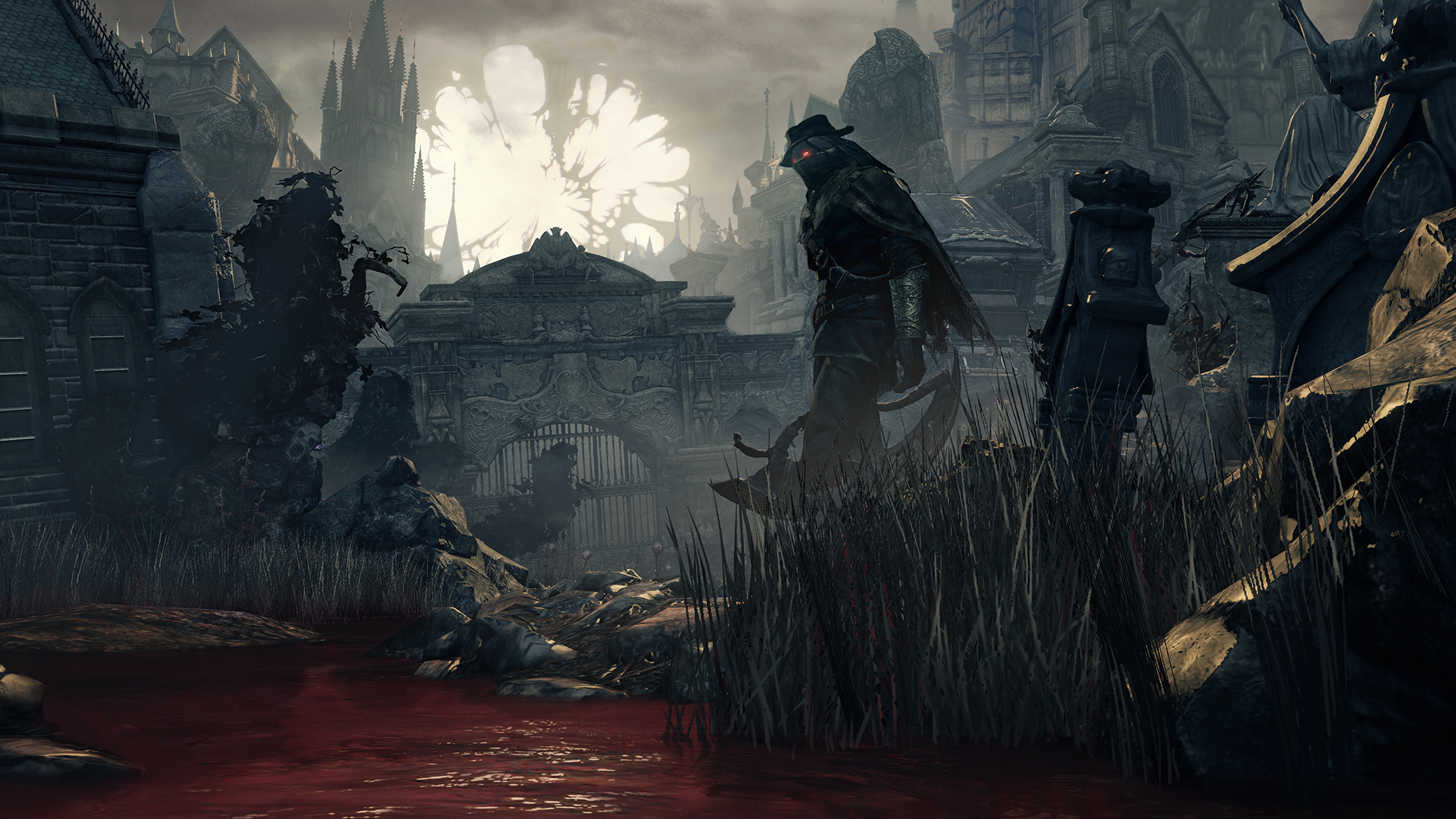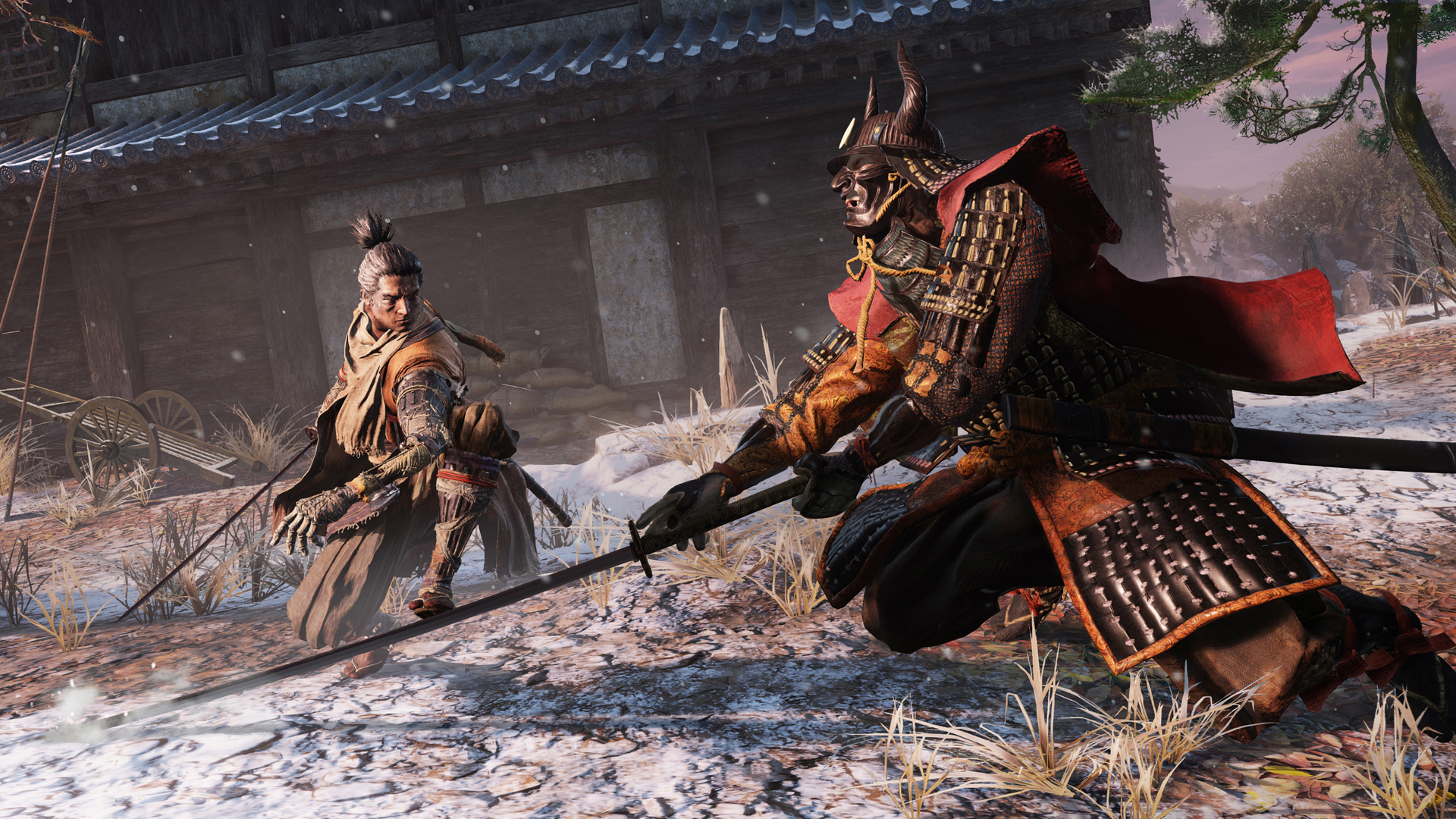Before Dark Souls and Elden Ring: FromSoftware's weird, wonderful past
How FromSoftware became RPG masters

Role-playing games have changed a lot throughout the years, transitioning from a genre that was once set in stone, to something that’s unpredictable, exciting and diverse.
At the helm of changing our perception of RPGs and their potential are companies such as FromSoftware. This Japanese developer has taken gamers on a variety of treacherous pilgrimages, from the cursed lands of the Souls series to the diseased-ridden streets of Bloodborne’s Yharnam.
With the fairly recent edition of the Sengoku inspired Sekiro: Shadows Die Twice and the upcoming epic collaboration with George R.R. Martin that is Elden Ring, it seems like FromSoftware's unforgiving game mechanics can be injected into any mould.
It’s easy to forget, however, that FromSoftware has been developing games since as early as the original PlayStation, with its take on RPGs finally reaching a refined state once Hidetaka Miyazaki stepped in to direct Demon’s Souls. FromSoftware's legacy of role-playing titles is a crucial part of the company's history, reflecting its journey to becoming the master of the RPG experience.
The dawn of FromSoftware

FromSoftware originally developed productivity software, which is perhaps why its take on videogames leans towards the dark and dismal. If you can’t recall ever seeing its logo on games of the past, it could be due to the fact that it had other companies publish its titles in the West, such as Crave, Ubisoft and Agetec.
FromSoftware’s debut role-playing experience, King’s Field, was actually the first RPG to launch on the PlayStation in the West. First released in Japan in 1994, King's Field is a first-person medieval fantasy, which is often hailed as the grandfather of the Souls series.
While this statement in itself should be taken with a pinch of salt, King's Field has undeniable tones of ambiguity within a dark and perilous landscape, which are all vital components of FromSoftware’s signature franchise, and is why Demon’s Souls is referred to as a spiritual successor.
Get daily insight, inspiration and deals in your inbox
Sign up for breaking news, reviews, opinion, top tech deals, and more.
Despite the first King’s Field title not receiving a western release, the series' second instalation eventually made its way onto the PlayStation in 1995, two years before Final Fantasy's Cloud Strife and his unwieldy sword. The game sold well enough to merit four sequels, with polarized opinions when it came to reviews.
However, many of the game's faults are also regarded as its features, with mechanics being described as slow. The speed of the game is said to attribute to its immersion factor, allowing players to take in the world around them. When you compare this style of gameplay to modern FromSoftware titles, it’s clear to see that the company has always had a thing for slowing the player down, whether it be literally, or by adding consequences for haste.
If we can take one thing from the King’s Field series, it’s that FromSoftware had a clear vision of what it wanted an RPG to be - a dark and fantastical adventure that should be approached with pace. Mechanically, however, King's Field feels distant from the adventures we know and love today, with more of the company's progression being portrayed by experimentation in the early 2000s.
Trial and error

During the dawn of the PlayStation 2 in the early noughties, FromSoftware began to drift away from the King’s Field formula - for better or for worse.
SquareSoft’s dominance within the RPG scene had become a force to be reckoned with, solidifying its stronghold with three Final Fantasy titles on the original PlayStation. In order to tackle its competitors, FromSoftware would have to try something different enough to merit player’s time. The company’s first two titles on the new PS2 platform, Eternal Ring and Evergrace, were both still RPGs, yet they created a split in FromSoftware’s application of role-playing games.
Eternal Ring is visually the same as the King’s Field series at face value, with a first-person view of a slow-paced fantasy adventure, featuring a magician as its protagonist. It’s clear that FromSoftware wanted to challenge SquaresSoft’s RPG formula, with even the game’s tagline reading “Who said Fantasies had to be Final?”.
Underneath the hood, Eternal Ring began to develop complex RPG mechanics that would help convey the depth that the genre was capable of. While Eternal Ring handles like an Elder Scrolls game on Ritalin, it features a ‘build your own’ ring system that allows players to use gems to both equip spells and boost stats simultaneously. With such a vast number of combinations of gems and rings, Eternal Ring boasts a level of customization that was absent from most RPGs of the time.
On the other hand, FromSoftware’s additional PS2 title Evergrace was a step into the brave unknown for the company, with mechanics that may seem all too familiar to Souls fans. Aesthetically, however, Evergrace is more akin to a Japanese anime than FromSoftwares usual affair, with the game’s protagonists featuring a get-up that’d be welcome in a Final Fantasy party.
"With such a vast number of combinations of gems and rings, Eternal Ring boasts a level of customization that was absent from most RPGs of the time"
Evergrace has something of a convoluted plot, with details surrounding the world and characters ambiguous. There are two playable characters, Darius and Charlene, who both follow a different narrative and combat styles. The main crux of the plot revolves around the characters trying to uncover the secrets of ‘The Crest’, a mysterious mark that is described as being cursed for those branded. Sounds familiar? The similarities to Dark Souls don’t end there.
Evergrace is a third-person RPG that features a ‘paper doll’ form of customization, which was another way of describing how your character would wear their equipped armour and clothing. Being able to customize a character's appearance in an RPG was a novel mechanic, especially considering its absence from the big players of the genre. This mechanic wasn't just ‘style over substance’, as each equipped item also had a collection of stats, which could correlate with physical attributes.
In terms of ‘levelling up’, the system implemented is somewhat vague, with stats being upgradable upon collection of a ‘blue fruit’, but the attributes themselves follow the same pattern as Dark Souls. While this is something many titles have now adopted, it seems FromSoftware knew that this system was a perfect fit for its RPGs, as it can still be found in the likes of Dark Souls and Bloodborne.
Evergrace received a mixed reception amongst critics of the time, with clunky gameplay being one of the game’s setbacks. Despite this, it’s easy to see how the combat system in Evergrace could transition into the action RPG elements found within SoulsBorne titles, with the player actively trading blows of weapons and magic with an enemy. This also corresponds with a ‘power’ bar, which effectively works on a similar level to stamina, only with a depleted bar affecting how much damage can be done to enemies.
It’s important to remember that despite the fact there are similarities, that's not to say the mechanics of Evergrace hold a candle to anything from the modern FromSoftware library. Instead, this comparison serves as an explanation of how the company structure its game design.
The birth of Souls

Throughout the noughties, FromSoftware stuck to what it knew best, focusing mainly on its Armored Core and King’s Field franchises. Despite the company’s ambitions when it came to RPGs, none of its attempts seemed to stand out amongst a sea of Square Enix hits. The transition to becoming one of the biggest names of the role-playing genre was something of a fluke, with certain internal developers taking a rather opportunistic approach to laying out their artistic visions.
After the development of Armored Core 4, a team at FromSoftware began work on a project with the intention of creating an action RPG. The project faltered at the early stages of conceptualization, which lead to Hidetaka Miyazaki making a request to join the team in hopes of revitalizing the work towards making the concept a reality.
So, how does this tie into the other FromSoftware games from before? Well, the team working on said project comprised of company veterans such as Shinichiro Nishida, who was one of the King’s Field writers. These veteran’s game design standards, alongside Miyazaki’s own vision, which was inspired by the likes of Bushido Blade and Monster Hunter, almost guaranteed a formula for success. Of course, the games main inspiration was drawn from King’s Field, using its art style and difficulty to mould something new.
This blend of existing concepts and new visions lead to the creation of Demon’s Souls, the title which would serve as a proof of concept for how FromSoftware could create further unique RPG experiences.
Yharnam wasn’t built in a day

FromSoftware’s slow transition into creating titles like Dark Souls, Bloodborne and Sekiro was a necessary step to creating their iconic formula.
While FromSoftwares legacy might be flawed, but these games kickstarted ideas that had been previously unseen in the RPG genre. The company’s most recent title, Sekiro: Shadows Die Twice demonstrated that the formula is beginning to experiment with a different approach, which might mean that the upcoming game Elden Ring may stray even more from the beaten path.
Needless to say, the company has developed its confidence when it comes to the execution of ideas, with plenty of time spent at the drawing board during their infancy. Who knows, perhaps we’ll be looking back at modern-day FromSoftware titles in the future, assessing how they influenced every changing world of RPG mechanics as we know it.
- Best upcoming games 2019: most anticipated titles for PS4, Xbox One and Switch

Phil is the hardware editor at GamesRadar+ responsible for covering retro gaming shenanigans, but also likes to put the latest gaming handhelds, graphics cards, and monitors to the test. In a previous life, they served as a member of the PCGamesN team, providing PC hardware news, reviews, and insights. They also spent a chunk of time contributing words to the likes of the BBC, The Daily Star, GameByte, and Den of Geek.